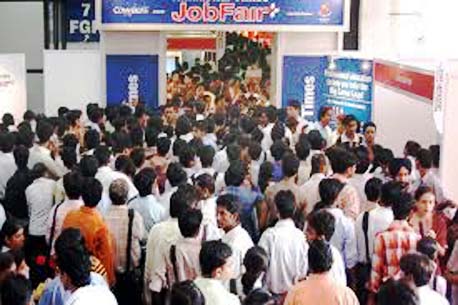 Professor Satya Narayan Misra in Bhubaneswar, January 29, 2024: The macroeconomic inputs for a budget are often blighted by growth variables like investment, manufacturing, digital infrastructure, and FDI inflow, without accounting for manifest development deficits like poor quality education, health care, skilling, sanitation, and nutrition.
Professor Satya Narayan Misra in Bhubaneswar, January 29, 2024: The macroeconomic inputs for a budget are often blighted by growth variables like investment, manufacturing, digital infrastructure, and FDI inflow, without accounting for manifest development deficits like poor quality education, health care, skilling, sanitation, and nutrition.
Prof Richard Musgrave rightly underscored the importance of allocation priority for the social sector, and promotion of distributive justice by imposing a high progressive tax on the superrich, while ensuring economic stability against parameters like employment, and inflation. It would, therefore, be appropriate to look at growth and development parameters together and improve our tax/GDP which is at a low threshold of 12%.
The budget should ideally achieve John Stuart Mill’s welfare maxim of ‘the greatest happiness of the greatest numbers’ rather than favoring a few vested interests under a regime of crony capitalism, buffeted by market fundamentalism. The Economist in its latest issue brings out how India leads most countries in terms of GDP growth (7% during 2023-24), trumping China for three successive years.
In terms of allocation to infrastructure, particularly roads & highways, and railways, the share of capital expenditure has increased from a sticky 12% in previous years to 21%; i.e from 1.9% of GDP in 2020 to around 3.3% now. Coupled with Digital Infrastructure and Fintec, India is on an information superhighway. Raghuram Raj alludes to these significant growth stories of India in his recent book Breaking the Mould.
 However, the Economist also flags concerns like high levels of unemployment which is around 7%, and high cost of government borrowing; 7.2%, plaguing India. High inflation still looms large. India’s Chief Economic Advisor, Dr. Nageswaran, in a recent interview, has also flagged the need to bolster the share of manufacturing in GDP from the trap of 16% to 25% and of total investment as a share of GDP from 28% to 35%, which was achieved during India’s high noon of growth in 2006.
However, the Economist also flags concerns like high levels of unemployment which is around 7%, and high cost of government borrowing; 7.2%, plaguing India. High inflation still looms large. India’s Chief Economic Advisor, Dr. Nageswaran, in a recent interview, has also flagged the need to bolster the share of manufacturing in GDP from the trap of 16% to 25% and of total investment as a share of GDP from 28% to 35%, which was achieved during India’s high noon of growth in 2006.
For Rajan, the thrust areas are high-end manufacturing and manufacturing services rather than low-end assembly and poor value addition. The Modi government has been extremely weary of reports from independent government organizations when they show disturbing development deficits. For instance, the NFHS V (2019-2021) data shows that India is home to one-third of children who are either underweight (33.1%) or stunted (34.7%).
Women who are anemic constitute nearly 50.4%, which has serious implications for aggravating infant mortality rate and maternal mortality rates further. At the heart of this heartrending situation is the low level of female force participation rate and poorly implemented nutrition support programs started by Indira Gandhi in 1975 through ICDS and the Poshan program launched by Narendra Modi in 2018. The common thread between the two initiatives is that they are high on rhetoric and poor in execution, with scant accountability.
Transcending the poverty line to assess people who earn less than $1.75 per day, the SDG has pigeonholed multi-dimensional poverty as a more reliable indicator to assess the contours of poverty. Based on composite factors like health, education, and movable and immovable assets, the Niti Ayog brings out interstate differences, which are both glaring and benumbing. While the All India % stands at 27.9%, an infrastructurally and industrially developed state like Gujarat has a high MDPI score of 21.7%, Kerala shows a healthy trend of 1.1% only, at par with many developed countries.
While under Mr Modi, the overall improvement in India in terms of availability of drinking water and electricity is as high as 94% and 92% respectively, in terms of sanitation, access to cooking fuel, nutrition, and housing the All-India deficiency is around 25%, 26%, 21% and 29% respectively. The government programs are high on hype and low on realization on the ground As Nirmala takes up the interim budget, she must take note of our poor record in improving the tax/GDP, while the debt burden is galloping.
 While the Covid 19 has completely the fiscal reticence of the government, it is time she strikes the right balance between achieving high growth through high market borrowing or improving tax collection through a slew of measures like plugging tax evasion, parking of funds in tax heavens and improving tax collection by increasing tax rates on the superrich and bringing back wealth tax and imposing a tax on agricultural income.
While the Covid 19 has completely the fiscal reticence of the government, it is time she strikes the right balance between achieving high growth through high market borrowing or improving tax collection through a slew of measures like plugging tax evasion, parking of funds in tax heavens and improving tax collection by increasing tax rates on the superrich and bringing back wealth tax and imposing a tax on agricultural income.
While there is a euphoria that GST collections are zooming, we do not realize that they are the most regressive form of taxation, unlike Direct taxes which are progressive in nature. Our tax collection / GDP has hovered around 11-12% during the last six years while the total debt to GDP has gone up from around 46% to 60% now.
Nirmala must send a message that the massive funding of infrastructure projects would be predominantly through increased tax collection rather than market borrowing, which crowds out private sector borrowing and pulls up the cost of government bonds to over 7% while it is only 2.4% in China. However, the most important priority for her is to fix social sector investment and make it move in tandem with economic infrastructure improvement.
A school without good teachers, a good road without skilled drivers, and a factory without adequate skilled labor cannot make India get into the league of developed countries, where China has moved. She must put the right kind of budget for skilling, improving infrastructure, and teaching in government schools, accord significantly higher budget for Anganwadis who are the epicenters of nutrition and early childhood education of nearly 70 million poor children and about 10 million expecting and nursing mothers who are hard up.
She should also keep in mind that ‘raising the level of nutrition and improvement of public health ‘ is a primary duty of the state as per Article 47 of the Indian Constitution. The governments have been defaulting the constitutional expectations. While she can do fiscal math of keeping fiscal deficit under check as per the FRBM mandate, she must fix the wheel of human development to move in tandem with incentives for growth through high capital expenditure.
Gandhi’s ambition of ‘wiping tears from every eye’ was insuperable when Nehru gave his Tryst with Destiny speech. But India has come a long way from such despondency and can truly become a world power. The recipe of Ram Rajya is embedded in caring more for the social sector, where the bottom 50% are deprived the most and make socio-economic justice a higher priority over sheer wealth maximization. Nirmala’s budget can kindle that hope.
It’s time to abdicate populism and embrace long-term goal of human development for all.



Leave a Reply
Be the First to Comment!